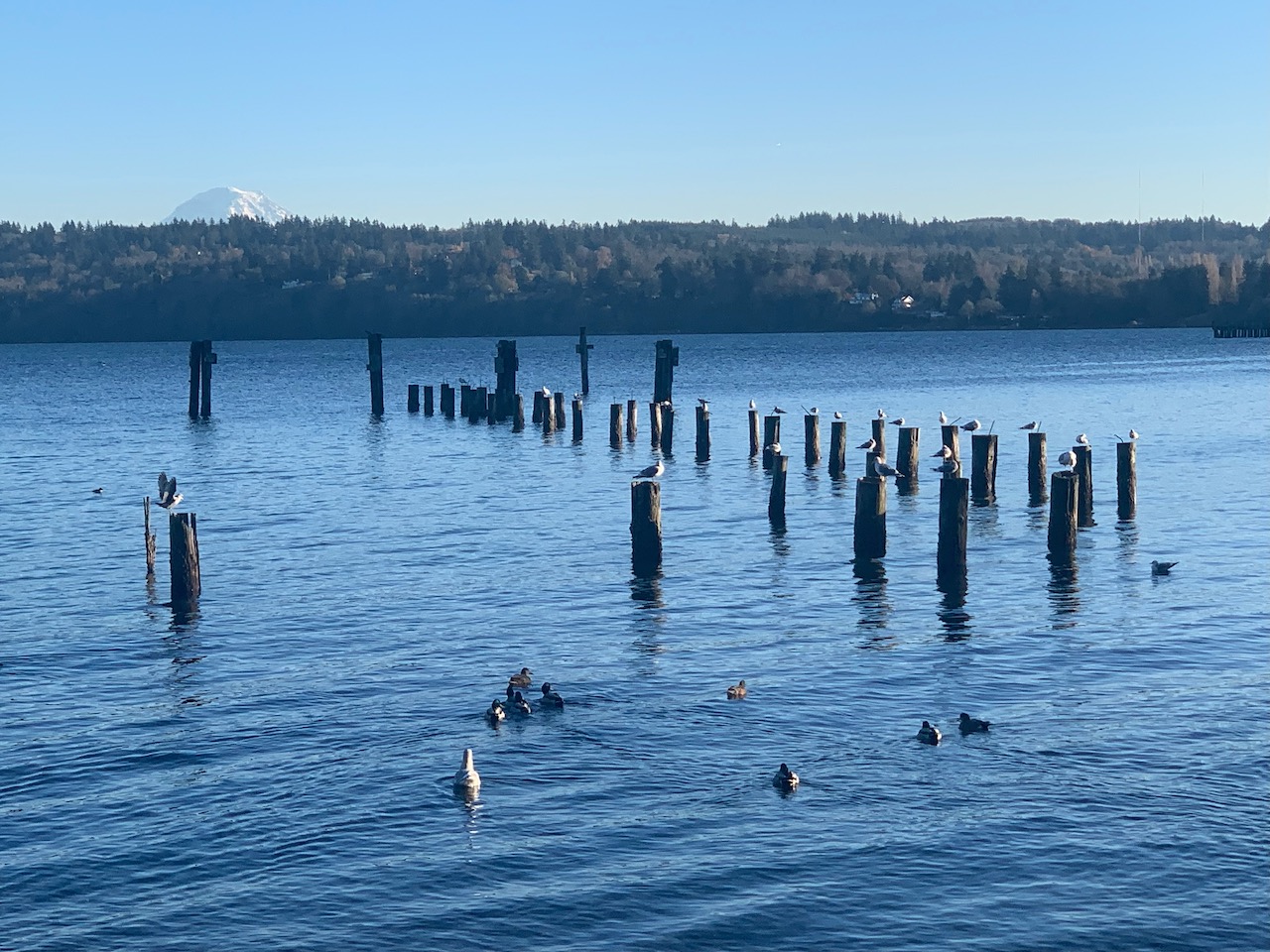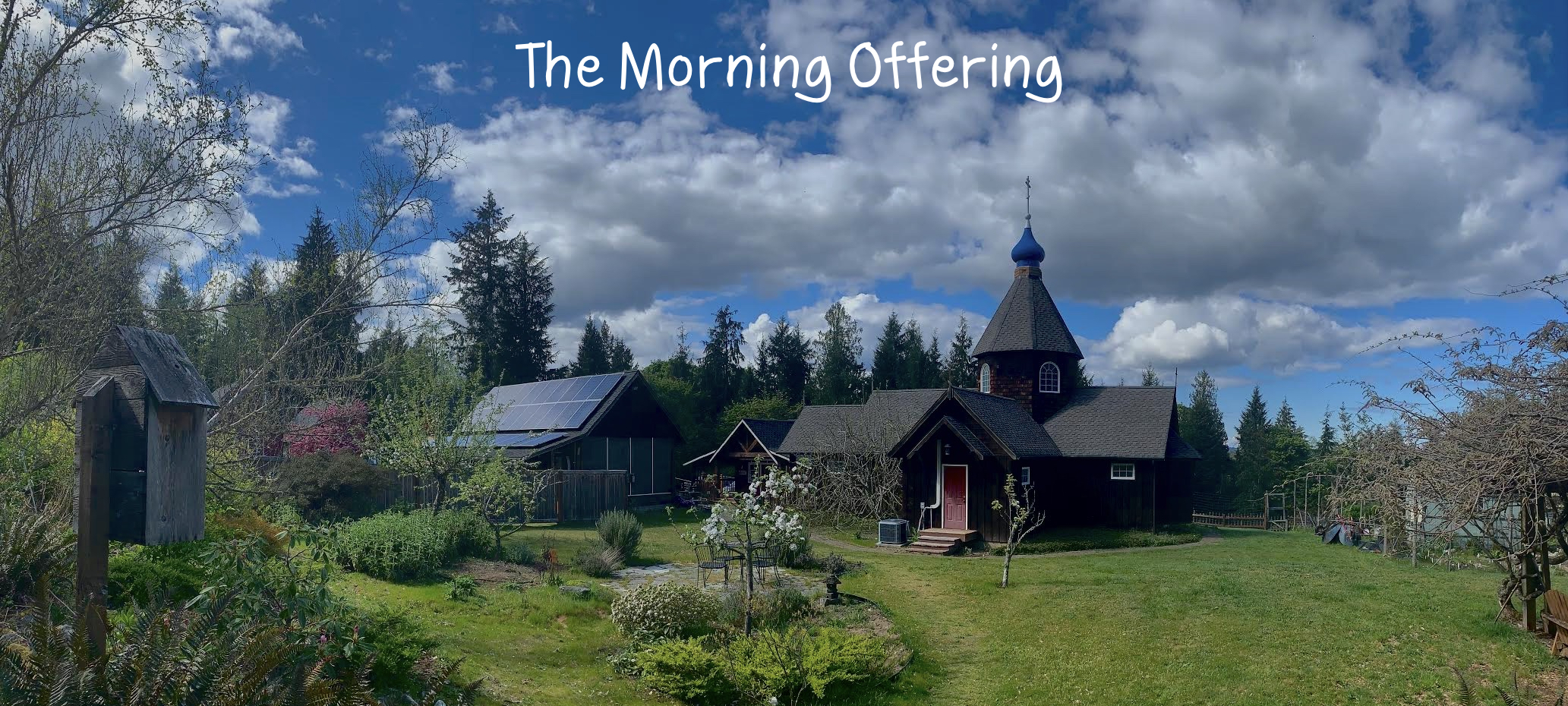The Whole Person is Both Soul and Body

Unlike angels, who are entirely spiritual beings, God has made each of us as creatures dwelling in a material world. To be whole, we must worship God both in body and soul. This teaching is central to our Christian faith and is an affirmation of the sacramental nature of this material world. Because of this truth icons have played a central role in Christian history, for they proclaim Jesus Christ’s physical reality as God Incarnate.
Our Lord told his disciples that “he who has seen me, has seen the Father”. Icons depicting the Holy Virgin show the Christ Child with bare feet, reminding us that he walked the earth among us. He (the Logos) through Whom all that is was brought into existence, condescended to take on our flesh and walk among us. He joined His divinity to our humanity, that we might become gods.
The Lord Jesus Christ was born, lived, died and rose from the dead in this material world. He broke bread with disciples, ate fish with his friends, and invited His disciple Thomas to feel the wound in his side, after His holy resurrection. Most of the miracles He performed were in the nature of physical healing.
Because of the Incarnation, our use of icons brings our whole nature, body and soul, into the material world. This physical aspect of prayer is what connects us to our true self, composed of body and soul. This is where God reaches down to embrace us.
Icons are wonderful aides in our communion with God because they serve as bridges to Christ and links with the Holy Virgin and the saints. They are by no means the only means , for sitting on the top of a mountain, or walking on the seashore, eyes open, allows us to behold the beauty of God’s creation, and His love for us. The icons, like the glory of creation, are windows into eternity, and invite us who live in this material world, into an encounter with God.
Icons are necessary and essential because they protect the full and proper doctrine of the Incarnation. While God cannot be represented in His eternal nature (“…no man has seen God”, John 1:18), He can be depicted simply because He “became human and took flesh.” Of Him who took a material body, material images can be made. In so taking a material body, God proved that matter can be redeemed. He deified matter, making it spirit-bearing, and so if flesh can be a medium for the Spirit, so can wood or paint, although in a different fashion.
“I do not worship matter, but the Creator of matter, who for my sake became material and deigned to dwell in matter, who through matter affected my salvation… —St. John of Damascus.”
The seventh and last Ecumenical Council upheld the iconodules’ position in AD 787. They proclaimed: Icons… are to be kept in churches and honored with the same relative veneration as is shown to other material symbols, such as the ‘precious and life-giving Cross’ and the Book of the Gospels. The ‘doctrine of icons’ is tied to the Orthodox teaching that all of God’s creation is to be redeemed and glorified, both spiritual and material.
With love in Christ,
Abbot Tryphon
Saturday November 19, 2022 / November 6, 2022
23rd Week after Pentecost. Tone five.
St. Paul the Confessor, archbishop of Constantinople (350).
Venerable Barlaam, abbot of Khoutyn (Novgorod) (1192).
New Hieromartyrs Nicitas bishop of Orekhovo-Zuev, Anatoly, Arsenius, Nicholas, Nicholas, Constantine priests, Hieromartyrs Barlaam, Gabriel, Gabriel, Woman Hieromartyrs Nina and Seraphima (1937).
New Hieromartyr Basil priest (1938).
New Martyr Gregory the Cross-bearer (1936).
St. Elias Fondaminskii of Paris (1942).
Synaxis of the New Martyrs of Sarov: Anatole, Basil, Hierotheus, Isaac, and Rufinus.
Repose of St. Herman, archbishop of Kazan (1567).
Venerable Luke, steward of the Kiev Caves (13th c.).
Venerable Barlaam of Keret Lake (16th c.).
Virgin-martyrs Tecusa, Alexandra, Claudia, Matrona, Polactia, Euphrosyne, and Athanasia of Ancyra (303).
Venerable Luke, monk, of Sicily (820).
Venerable Winnocus, abbot (716) (Neth.).
St. Leonard of Noblac (559) (Gaul).
Venerable Illtyd, abbot of Llanilltyd Fawr, disciple of St. Germanus of Auxerre (England) (6th c.) (Celtic & British).
St. Cowey of Portaferry, abbot of Moville (8th c.) (Celtic & British).
St. Demetrianus, bishop of Cytheria in Cyprus (915).
The Scripture Readings
2 Corinthians 8:1-5
Excel in Giving
8 Moreover, brethren, we make known to you the grace of God bestowed on the churches of Macedonia: 2 that in a great trial of affliction the abundance of their joy and their deep poverty abounded in the riches of their liberality. 3 For I bear witness that according to their ability, yes, and beyond their ability, they were freely willing, 4 imploring us with much urgency that we would receive the gift and the fellowship of the ministering to the saints. 5 And not only as we had hoped, but they first gave themselves to the Lord, and then to us by the will of God.
Luke 9:1-6
Sending Out the Twelve
9 Then He called His twelve disciples together and gave them power and authority over all demons, and to cure diseases. 2 He sent them to preach the kingdom of God and to heal the sick. 3 And He said to them, “Take nothing for the journey, neither staffs nor bag nor bread nor money; and do not have two tunics apiece.
4 “Whatever house you enter, stay there, and from there depart. 5 And whoever will not receive you, when you go out of that city, shake off the very dust from your feet as a testimony against them.”
6 So they departed and went through the towns, preaching the gospel and healing everywhere.
